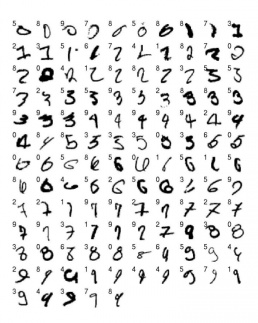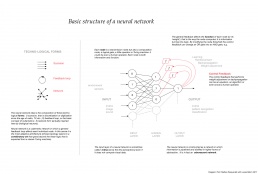Difference between revisions of "Neural aesthetics"
Jump to navigation
Jump to search


| Line 69: | Line 69: | ||
* Andrey Kurenkov, [http://www.andreykurenkov.com/writing/a-brief-history-of-neural-nets-and-deep-learning/ "A 'Brief' History of Neural Nets and Deep Learning"], [http://www.andreykurenkov.com/writing/a-brief-history-of-neural-nets-and-deep-learning-part-2 Part 2], [http://www.andreykurenkov.com/writing/a-brief-history-of-neural-nets-and-deep-learning-part-3/ Part 3], [http://www.andreykurenkov.com/writing/a-brief-history-of-neural-nets-and-deep-learning-part-4 Part 4], ''Andrey Kurenkov'' blog, 24 Dec 2015. | * Andrey Kurenkov, [http://www.andreykurenkov.com/writing/a-brief-history-of-neural-nets-and-deep-learning/ "A 'Brief' History of Neural Nets and Deep Learning"], [http://www.andreykurenkov.com/writing/a-brief-history-of-neural-nets-and-deep-learning-part-2 Part 2], [http://www.andreykurenkov.com/writing/a-brief-history-of-neural-nets-and-deep-learning-part-3/ Part 3], [http://www.andreykurenkov.com/writing/a-brief-history-of-neural-nets-and-deep-learning-part-4 Part 4], ''Andrey Kurenkov'' blog, 24 Dec 2015. | ||
| − | ===Recent debates on artificial intelligence in the humanities=== | + | ===Recent debates on artificial intelligence in the humanities and social sciences=== |
* Matteo Pasquinelli (ed.), ''[https://monoskop.org/log/?p=15585 Alleys of Your Mind: Augmented Intelligence and Its Traumas]'', Lüneburg: Meson, 2015, 212 pp. | * Matteo Pasquinelli (ed.), ''[https://monoskop.org/log/?p=15585 Alleys of Your Mind: Augmented Intelligence and Its Traumas]'', Lüneburg: Meson, 2015, 212 pp. | ||
* Florian Hecker, Robin Mackay, [[Media:Hecker_Florian_Mackay_Robin_2015_On_Sound_and_Artificial_Neural_Networks.pdf|"On Sound and Artificial Neural Networks"]], in ''Writing and Unwriting (Media) Art History: Erkki Kurenniemi in 2048'', eds. Joasia Krysa and Jussi Parikka, MIT Press, 2015, pp 279-289. | * Florian Hecker, Robin Mackay, [[Media:Hecker_Florian_Mackay_Robin_2015_On_Sound_and_Artificial_Neural_Networks.pdf|"On Sound and Artificial Neural Networks"]], in ''Writing and Unwriting (Media) Art History: Erkki Kurenniemi in 2048'', eds. Joasia Krysa and Jussi Parikka, MIT Press, 2015, pp 279-289. | ||
| Line 75: | Line 75: | ||
** [http://www.glass-bead.org/article/machines-that-morph-logic/?lang=frview "Des machines qui morphent la logique: les réseaux de neurones et l’automatisation déformée de l’intelligence comme inférence statistique"], ''Glass Bead'' 2, 2017. {{fr}} | ** [http://www.glass-bead.org/article/machines-that-morph-logic/?lang=frview "Des machines qui morphent la logique: les réseaux de neurones et l’automatisation déformée de l’intelligence comme inférence statistique"], ''Glass Bead'' 2, 2017. {{fr}} | ||
* Adrian Mackenzie, ''Machine Learners'', MIT Press, 2017, 272 pp. [https://mitpress.mit.edu/books/machine-learners] | * Adrian Mackenzie, ''Machine Learners'', MIT Press, 2017, 272 pp. [https://mitpress.mit.edu/books/machine-learners] | ||
| + | * Eirini Malliaraki, [https://medium.com/@eirinimalliaraki/toward-ethical-transparent-and-fair-ai-ml-a-critical-reading-list-d950e70a70ea "Toward ethical, transparent and fair AI/ML: a critical reading list"], ''Medium'', Feb 2018. | ||
* [https://monoskop.org/log/?tag=artificial-intelligence writings on artificial intelligence on Monoskop Log]. | * [https://monoskop.org/log/?tag=artificial-intelligence writings on artificial intelligence on Monoskop Log]. | ||
Revision as of 03:24, 28 February 2018

Partial results of the "hello world" test of a machine learning algorithm, automated recognition of handwritten digits, showing 125 test cases that the network got wrong. Each case is labeled by the network’s guess. The true classes are arranged in standard scan order. Source: Hinton et al 2006.

Basic structure of a neural network. Several techno-logical forms can be identified in the concept: scansion, that is discretisation or digitisation since the age of radio, TV, etc.; feedback loop, or the basic concept of cybernetics; and network form, here inspired by biological neurons. Diagram by Matteo Pasquinelli with Lukas Rehm, 2017. Source.
A resource on recent work between art/design and artificial neural networks in machine learning.
Events
- The Lab at the Google Cultural Institute, Paris, launches a 'machine learning for art' residency, early 2015 - mid-2016. Artists: Mario Klingemann, Cyril Diagne. Talk. Works.
- DeepDream launched by Google's software engineers Alexander Mordvintsev, Christopher Olah and Mike Tyka, 17 Jun 2015. Reddit post from a day earlier. Vice coverage. Source code.
- (Artifical Intelligence) Digitale Demenz exhibition, HMKV, Dortmund, 14 Nov 2015-6 Mar 2016. An exhibition exploring the relationship between contemporary art and artificial intelligence. Works by Erik Bünger, John Cale, Brendan Howell, Chris Marker, Julien Prévieux, Suzanne Treister, and !Mediengruppe Bitnik. Curated by Thibaut de Ruyter.
- DeepDream: The Art of Neural Networks, 26-27 Feb 2016. Exhibition and symposium. Organised by Gray Area Foundation for the Arts and Research at Google.
- alt-AI: exploring the intersection of artificial intelligence and art, School for Poetic Computation, New York, 20-22 May 2016. Symposium and exhibition. Video recordings of talks: Gene Kogan, Golan Levin, Cassie Tarakajian, Hannah Davis, Rebecca Fiebrink, Mike Tyka, Heather Dewey-Hagborg, Brian Whitman, Allison Parrish, Mario Klingemann, Lynn Cherny, Kathryn Hume; performance: Jason Levine. Interviews (15 min), Exhibition highlights (2 min).
- Music, Art & Machine Intelligence workshop, San Francisco, 1 Jun 2016. Jointly hosted by Google's AMI and Magenta groups. Video recordings of talks. Proceedings.
- Machine Research – Research/PhD Workshop 2016, Brussels, 24-26 Oct 2016. Organised by Aarhus University, transmediale, and Constant. Contributes to the transmediale festival programme for 2017.
- STATE Festival 2016, Kühlhaus, Berlin, 4-5 Nov 2016. Conference, exhibition, performances, screenings and workshops exploring the intersection of current emotions research and artificial intelligence. Director: Christian Rauch.
- How Deep is Your Dream, Merz Akademie, Stuttgart, 8 Nov - 6 Dec 2016. Weekly lecture series curated and moderated by Olia Lialina. Video recordings of talks: Sebastian Schmieg, Frieder Nake, Lauren Huret, Gene Kogan, Simone C. Niquille.
- The Age of AI Artisans, State of AI Pop-Up Studio, Los Angeles, 3-29 Oct 2017. Exhibition featuring Unhuman: Art in the Age of AI, the first exhibition on art produced by the AICAN Algorithm.
- Ars Electronica: AI. Artificial Intelligence. Das andere Ich / The Other I, Linz, 7-11 Sep 2017. Festival featuring exhibitions, performances, conferences, etc. Catalogue.
Artists, designers
- Anil Bawa-Cavia, @cavvia, Berlin.
- Ian Cheng, @eyecheng, NYC.
- Hannah Davis, @ahandvanish, Paris.
- Heather Dewey-Hagborg, @hdeweyh, Chicago & NYC.
- Rebecca Fiebrink, @rebeccafiebrink, London.
- Mario Klingemann, @quasimondo, Munich.
- Gene Kogan, @genekogan, Berlin.
- Kyle McDonald, @kcimc, Los Angeles.
- Simone C. Niquille, @s__c__n, Amsterdam.
- Tivon Rice, @tivonrice, Seattle.
- Sebastian Schmieg, @s_schmieg, Berlin.
- Cassie Tarakajian, @hellothisiscass, Brooklyn, NY.
- Francis Tseng, @frnsys, Brooklyn, NY.
- Michael Tyka, @mtyka, Seattle.
Initiatives
- School for Poetic Computation, founded 2013 in New York. @sfpc.
- School of Machines, Making & Make-Believe, founded March 2014 in Berlin by Rachel Uwa.
- Fast Forward Labs, a machine intelligence research company, New York.
- Artists and Machine Intelligence (AMI). A program at Google that brings together artists and engineers to realize projects using Machine Intelligence. [1]
- Magenta, a Google Brain project dedicated to generate art using machine learning. Started in June 2016. [2]
Literature, data, resources
Courses and textbooks for artists
- Textbooks
- Francis Tseng, "Notes on Artificial Intelligence", started Fall 2015.
- Gene Kogan, Francis Tseng, Machine Learning for Artists, 2016f. Book in progress.
- Video lectures
- Gene Kogan, "Machine Learning for Artists", course taught at ITP, New York University, New York, Spring 2016. 6 lectures, ~15 hours.
- Gene Kogan, "The Neural Aesthetic", course taught at School Of Machines, Making, and Make-Believe, Berlin, Summer 2016. 8 lectures, ~18 hours.
- Introductions
- Kyle McDonald, "A Return to Machine Learning", Medium, 7 Oct 2016.
- Resources
- A.I. Experiments, a resource on machine learning art developed by Alexander Chen, creative director at Google Creative Lab, with Yotam Mann, C Christiansen, Jonas Jongejan, Gene Kogan, Kyle McDonald, et al. Launched on 16 Nov 2016.
- People + AI Research, Google Design, 2018ff.
Data sets
- Luke de Oliveira, "Fueling the Gold Rush: The Greatest Public Datasets for AI", Medium, 11 Feb 2017.
Scientific introduction into deep learning
- Ethem Alpaydin, Introduction to Machine Learning, MIT Press, 2004, 400 pp; 2nd ed., 2009, 584 pp; 3rd ed., 2014, 640 pp.
- Michael Nielsen, Neural Networks and Deep Learning, Determination Press, 2015.
- Ian Goodfellow, Yoshua Bengio, Aaron Courville, Deep Learning, MIT Press, 2016.
- Ethem Alpaydin, Machine Learning: The New AI, MIT Press, 2016, 224 pp. [3]
Historization of deep learning
- Jürgen Schmidhuber, "Deep Learning in Neural Networks: An Overview", ScienceDirect 61, Jan 2015, pp 85-117. [4]
- Yann LeCun, Yoshua Bengio, Geoffrey Hinton, "Deep Learning", Nature 521, 28 May 2015, pp 436-444. Critiqued by Schmidhuber recasting the recent advances of deep learning as building on top of prior work with multilayer neural networks, going back decades.
- Andrey Kurenkov, "A 'Brief' History of Neural Nets and Deep Learning", Part 2, Part 3, Part 4, Andrey Kurenkov blog, 24 Dec 2015.
Recent debates on artificial intelligence in the humanities and social sciences
- Matteo Pasquinelli (ed.), Alleys of Your Mind: Augmented Intelligence and Its Traumas, Lüneburg: Meson, 2015, 212 pp.
- Florian Hecker, Robin Mackay, "On Sound and Artificial Neural Networks", in Writing and Unwriting (Media) Art History: Erkki Kurenniemi in 2048, eds. Joasia Krysa and Jussi Parikka, MIT Press, 2015, pp 279-289.
- Matteo Pasquinelli, "Machines that Morph Logic: Neural Networks and the Distorted Automation of Intelligence as Statistical Inference", Glass Bead 2, 2017.
- Adrian Mackenzie, Machine Learners, MIT Press, 2017, 272 pp. [5]
- Eirini Malliaraki, "Toward ethical, transparent and fair AI/ML: a critical reading list", Medium, Feb 2018.
- writings on artificial intelligence on Monoskop Log.
Art practice and criticism
- Ars Electronica: AI. Artificial Intelligence. Das andere Ich / The Other I, eds. Gerfried Stocker, Christine Schöpf and Hannes Leopoldseder, Berlin: Hatje Cantz, 2017, 400 pp. Catalogue. Festival. (English)
- Digimag 76: "Smart Machines for Enhanced Arts", eds. Silvia Bertolotti and Marco Mancuso, Milan: Digicult, Summer 2017, 74 pp, EPUB. Texts by Memo Akten, Claire Burke, Geoffrey Drake-Brockman, Jerry Galle, Eugene Kogan, Robert B. Lisek, Filippo Lorenzin, Andreas Refsgaard, Liu Yuxi, Alessandro Masserdotti. [6]